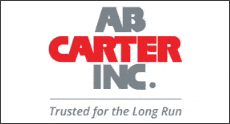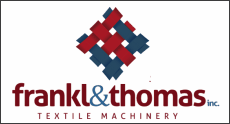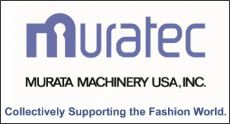
Posted April 2, 2020
By Devin Steele (DSteele@eTextileCommunications.com)
What does the $2.2 trillion stimulus package aimed at mitigating the economic impact of the COVID-19 pandemic mean to your company?
That topic was addressed during an hour-long webinar hosted by the American Apparel & Footwear Association (AAFA) Tuesday. Four speakers from Philadelphia-based law firm Cozen O'Connor hit the highlights of the CARES (Coronavirus Aid, Relief, and Economic Security) Act, signed into law by President Trump last week. Steve Lamar, president and CEO of the AAFA, moderated.
The legislation was put forth to address major disruptions brought on by the shutdown of many American businesses by providing economic support to the business sector, employees, individuals and families, as well specific industries that have been impacted. Highlights of the Act include immediate tax rebates of up to $1,200 per taxpayer; forgivable, subsidized loans to small businesses; direct loans to the hardest hit industries; the relaxation of income tax rules and deadlines; ongoing financial aid to students, schools and colleges; and direct stabilization of money market mutual funds.
Labor and employment matters
Michael Schmidt, vice chair of Labor & Employment Department and office managing partner at the law firm, updated viewers on labor and employment matters. CARES requires private employers with fewer than 500 employees (and state/local government employers regardless of size) to provide special paid emergency family and medical leave and paid sick leave related to COVID-19 in certain circumstances beginning on April 1, 2020, to be offset by refundable payroll tax credits, he noted. This also applies to employees who were laid off after March 1 and employed for at least 30 of 60 calendar days prior to the layoff and subsequently rehired, he added.
Schmidt reported that there is talk about amending the fewer-than-500-employee threshold.
That act included major temporary changes to the Family and Medical Leave Act (FMLA) and the Paid Sick Leave (PSL) act, and created new paid leave entitlements, he noted. Federally, PSL and FMLA each provide paid leave in certain coronavirus-related situations, both with caps, he noted. PSL and FMLA are not retroactive and are in addition to any PTO/leave already provided by the employer, he added.
PSL and FMLA leave can be taken intermittently (while teleworking) only if the employer permits, Schmidt said. He noted that if a workplace closed and employees were sent home without work to do before or after April 1, or if the employee is furloughed by the employer that is not closed, the employee is not entitled to PSLA or FMLA, but perhaps unemployment insurance instead, he said. However, the employer must still pay for any PSL or FMLA used before closing.
Employers with fewer than 50 employees may claim an exemption from the emergency paid leave provisions of CARES, with the exemption applying specifically to leave taken for reasons of child care and school closures related to COVID-19, according to new U.S. Department of Labor (DOL) guidance, Schmidt said. He also mentioned new posting requirements of notices to employees.
Schmidt also went over unemployment benefits, pointing out that it is still a state-by-state question regarding eligibility, benefit amounts, etc. Under CARES, $600 per week is added automatically to every recipient of benefits for up to four months, he said. Also, through December 31, 2020, it adds 13 weeks of unemployment insurance, from 26 to 39 weeks, he added.
In addition, Schmidt covered the federal WARN Act requiring employers provide at least 60 days’ notice of a mass layoff or plant closing, adding that a covered employer is one that employs at least 100 people, excluding part-time employees. “And don’t forget state mini-WARN Acts,” he said. He also noted that an employer who furloughs or lays off fewer than 50 employees has no WARN effect.
Small business financing options
Steven Dickinson, co-chair of International Practice at Cozen O'Connor, then presented insights into small business financing options for businesses in light of the COVID-19 crisis.
“When we talk about a small business, people generally think of 500 employees or less,” he said. “But that number can be more than 500, so these points might be applicable to your business.”
The U.S. Small Business Administration (SBA) has a variety of loan programs for eligible small business, he noted, and the CARES Act appropriated an additional $349 billion for 7(a) loans, including working capital, SBA Express and Paycheck Protection. In early March, Congress appropriated funding for an additional $7 billion of disaster loans, he added.
Dickinson reported that CARES provides six months of payments on existing SBA loans, beginning at the next loan payment date, and that some states have loan and/or financial assistance programs for businesses affected by the pandemic.
He then highlighted various types of SBA loans available, including a 7(a) Working Capital Loan, an Express Loan and an Economic Injury Disaster Loan (EIDL), and explained the difference in each.
In particular, a 7(a) Working Capital Loan can go up to $5 million and be used for general working capital, he noted.
“The approval authority has been delegated to participating lenders, so there are hundreds if not thousands of commercial banks that have the authority to originate those loans,” Dickinson said. “This is a very viable source of capital for small businesses.”
Meanwhile, an Express Loan can go up to $1 million during 2020 (increased from $350,000 by the CARES Act) and also can be used for general working capital. These loans are designed to offer an expedited turnaround time, perhaps in as little as three days, he noted.
Economic Injury Disaster Loans normally come into play if there is a natural disaster, but the entire country has been declared a disaster zone during the COVID-19 crisis, he said. With EIDLs, businesses are able to receive up to $2 million that can be used as general working capital, he explained. CARES provides for self-certification of eligibility and approval based only on credit score, without submitting tax returns, and it eliminates personal guarantees for loans under $200,000, he explained. In addition, the EIDL advance of $10,000 authorized under CARES Act is forgiven if the loan is not approved, he noted.
Dickinson also delved into SBA Paycheck Protection Loans, which offer 2.5 times the average monthly payroll costs for the year before the loan, up to $10 million which may be forgivable in whole or in part. This is a fully loaded payroll including salary, benefits, taxes, retirement contributions. It does exclude salaries that extend above 100K per year as well as employees living outside of the United States. These can be used for payroll, rent, utilities and interest on debt existing at February 15, 2020.
He even went on to suggest that companies that utilize these Paycheck Protection Loans even set up a separate bank account so that they can easily document what the loan was used to pay as this is very important when you get to the forgiveness part of this program. Anything that is not forgiven will be termed out over a 10-year period, there is a grace period at the front of 6-12 months before repayment begins. Maximum interest is 4%. Employers may not use the Paycheck Protection Loans and also use the tax credits under the CARES Act Section 2031 or the wage credit under the Families First Act.
The “small business” size requirements for most borrowers of these loans is that the number of employees must be in the 250 to 1,500 range, depending on industry classification.
Financial relief for distressed industries and mid-size businesses
In addition to the small business aspects of the CARES Act, the Treasury Dept. was granted $500 worth of authority for loans and loan guarantees for other businesses that essentially don’t receive adequate economic relief under the package, according to Jeff Vogel, member at Cozen O'Connor.
“Primarily, this is aimed at mid-sized and large businesses in distressed industries,” he said. “However, small businesses that receive other loans under the SBA may still be eligible for these programs as well if they can demonstrate that they have not otherwise received adequate economic relief under those SBA programs.”
All loans appear to have certain restrictions such as issuance of dividends, stock buy-backs and employee compensation, Vogel said.
Mid-Size Business (MSB) Relief is aimed at business with 500 to 10,000 employees.
“We have some limited information on what the program will look like when it’s eventually stood up,” he said. “Unlike the SBA programs, this is a wholly new program so Treasury has to establish full policies as to how this program will work.”
Treasury will offer financing to commercial lenders that will provide direct loans a 2 percent interest rates to MSBs, Vogel said.
“Assuming you fall into that mid-size business, it really is an attractive option,” he noted.
These loans have several restrictions, he pointed out, including: funds must be used to retain at least 90 percent of the workforce at full compensation benefits until Sept. 30, 2020; businesses must intend to restore 90 percent of the workforce that existed on February 1, 2020, and restore all compensation and benefits to workers no later than four months after termination of the COVID-19 public health emergency; business must refrain from outsourcing or offshoring jobs for two years after term of the loan as well as refrain from abrogating existing collective bargaining agreements (CBAs) for two years after term of the loan; and businesses must remain “neutral” in any effort related to union organization for the term of the loan.
Tax-related provisions
Joshua Weinberger, member at the law firm, closed out the webinar with a deep dive into tax-related provisions to COVID stimulus legislation.
For business taxes, a number of provisions were included in CARES, including:
-
An employee retention tax credit for employers subject to closer and/or reduced sales due to COVID-19;
-
Free delay in the required deposit of employer Social Security taxes and self-employment taxes of individuals;
-
Modification of the treatment of net operating losses;
-
Retroactive suspension of the limitation on the excess business losses of noncorporate taxpayers;
-
Modifications to the limitation on business interest deductions;
-
A correction to the TCJA rules for bonus depreciation for qualified improvement; and
-
Modification of the credit for prior years’ minimum tax liability of corporations.
On the first provision, employee retention tax credit for employers, Weinberger pointed out that for eligible employers having more than 100 full-time employees, qualified wages are wages paid to employees when they are not providing services during a COVID-19 related shutdown order or during the quarter in which the employer experienced a decline in gross receipts. Therefore, wages paid to employees “working from home” would not be qualified wages, he noted.
He added that for eligible employers with 100 or fewer full-time employees, all employee wages paid qualify for the credit, whether the employer is open for business, the employees are working from home or the business is subject to a shutdown order.
Qualified wages to be taken into account may not exceed $10,000 of compensation, including health benefits paid to an eligible employee in a calendar quarter, Weinberger added.
On the matter of Social Security taxes, he reminded viewers that employers generally are responsible for paying a 6.2% Social Security tax on employee wages, but the new law allows the deferral to extend for two years, requiring that the deferred tax be paid half by December 31, 2021 and the other half by December 31, 2022.
Related to net operating losses (NOL), Weinberger said the new legislation amends the Code so that an NOL arising in a tax year beginning in 2018, 2019 or 2020 can be carried back five years and used to offset taxable income during that five-year period, producing a refund that would be paid to the taxpayer. Additionally, the legislation temporarily removes the percentage of taxable income limitation enacted as part of TCJA and allows an NOL to fully offset the taxpayer’s taxable income.
As for the limitation on business interest loans, CARES temporarily increases the amount of interest expense businesses are allowed to deduct on their tax returns by increasing the 30 percent of adjusted taxable income limitation to 50 percent of taxable income (with adjustments) for 2019 and 2020, he noted.
Another point of note: on the modification of the credit for prior years’ minimum tax liability of corporations, the Act accelerates the ability of companies to recover those AMT credits, permitting companies to claim a refund now by making the change to full refundability applicable to the corporation’s first taxable year beginning in 2018, Weinberger informed.
The Washington, D.C.-based AAFA is the national trade association representing apparel, footwear and other sewn products companies and their suppliers. Representing more than 1,000 name brands, the association is the public policy and political voice of the apparel and footwear industry, its management and shareholders, its nearly 4 million U.S. workers and its contribution of more than $400 billion in annual U.S. retail sales.
Experts explain what $2.2TR CARES Act means to business


Steve Lamar











